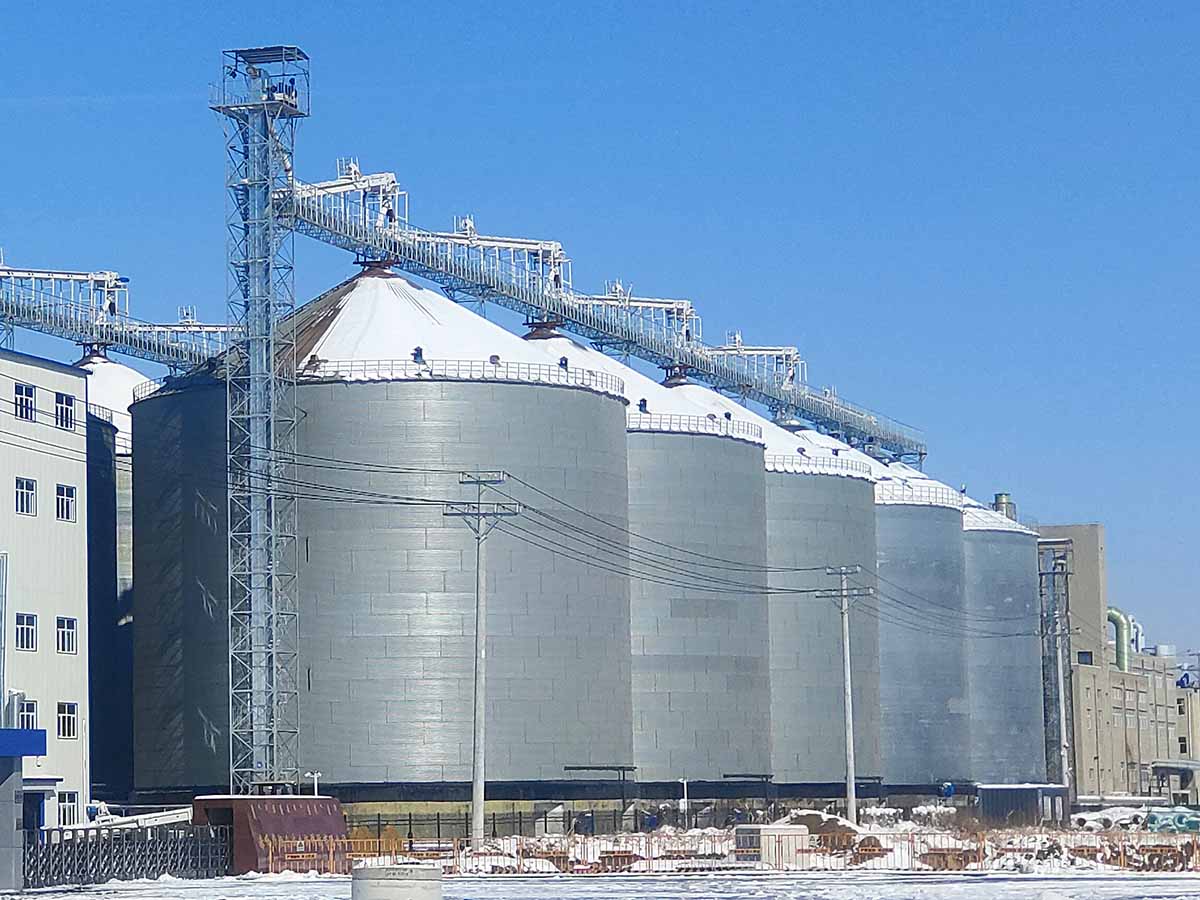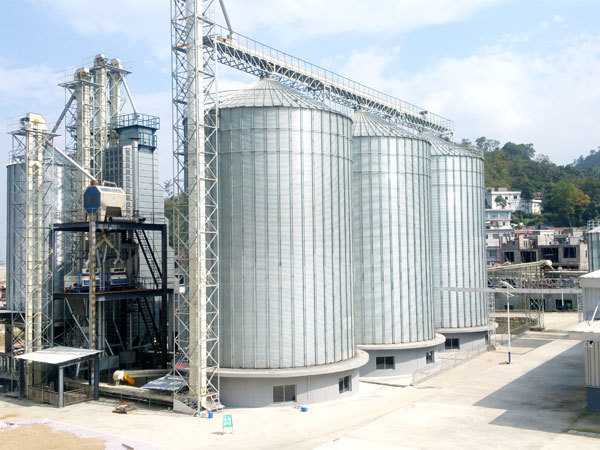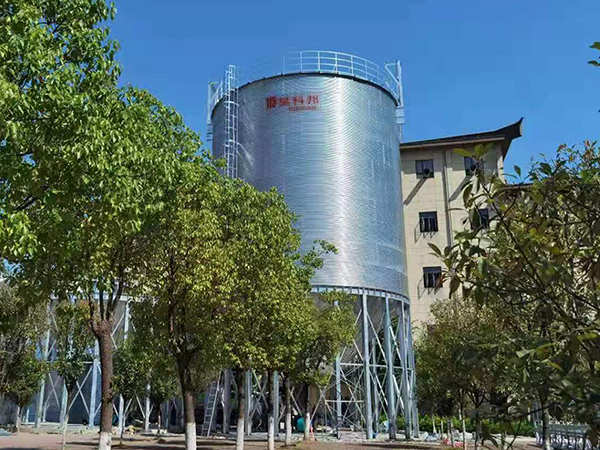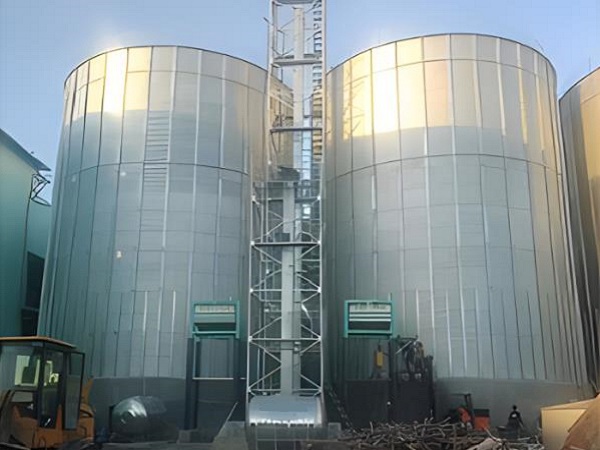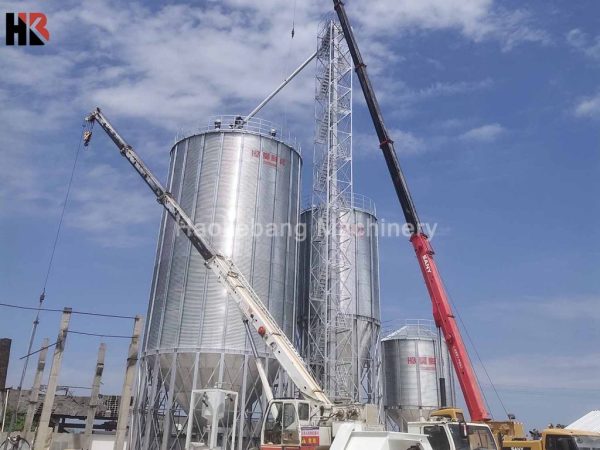fish feed silo
fish feed silo is a facility used to store and manage fish feed. It typically consists of a container for storing fish feed with a certain capacity to accommodate large quantities
fish feed silo Introduction
A fish feed silo is a facility used to store and manage fish feed. It typically consists of a container for storing fish feed with a certain capacity to accommodate large quantities of feed needed for fish farming. The design of fish feed silos aims to keep the feed fresh and dry, preventing it from being affected by moisture, pests, or other contaminants. These silos often feature good sealing and ventilation systems to ensure the quality and nutritional value of the feed. Fish feed silos can be utilized in various aquaculture settings, including fisheries, fish farms, and aquariums, serving as vital facilities for the effective management and supply of fish feed.
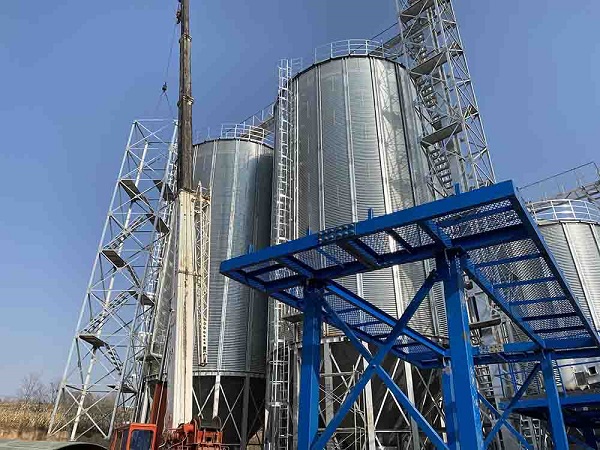
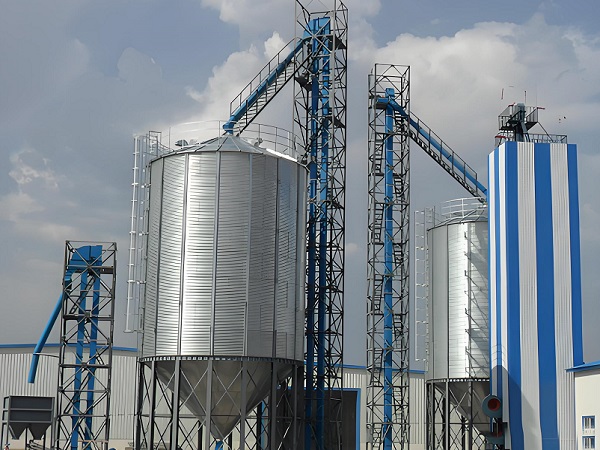
Characteristics of fish feed silo
Moisture Resistance
The silo is designed to be moisture-resistant to maintain the quality of the feed and prevent mold growth.
Sealing Capability
It has a good sealing performance to protect the feed from external elements such as rain and pests, ensuring the freshness and safety of the feed.
Durability
Constructed with corrosion-resistant materials like stainless steel or specially coated galvanized steel to withstand harsh storage environments and long-term use.
Appropriate Capacity
Available in a variety of sizes to meet the storage needs of different scales of aquaculture operations.
Ease of Cleaning
Designed to facilitate easy cleaning and maintenance to prevent bacterial growth from residual feed or contamination of new feed.
Discharge System
Equipped with an effective discharge system, such as automatic unloading or fluidized unloading, for quick and even distribution of feed.
Compatibility
Can be integrated with automated feeding systems for efficient and automated feeding operations.
Monitoring Systems
Fitted with monitoring systems, including temperature and humidity sensors, and level indicators for real-time silo status monitoring.
Structural Stability
Engineered with a stable structure that can withstand adverse weather conditions, such as strong winds and heavy snow.
Economical
lthough the initial investment may be relatively high, the high-quality silo has a long service life, making it cost-effective in the long run.
Ease of Installation
Designed for simplicity, facilitating rapid installation and deployment to reduce construction time and costs.
Environmental Design
The silo may include design features that minimize pollution and waste, considering environmental protection.
Flexibility
The silo is designed flexibly to be customized according to specific storage needs and site conditions.
Safety
It complies with relevant safety standards and regulations to ensure the safety of operating personnel.
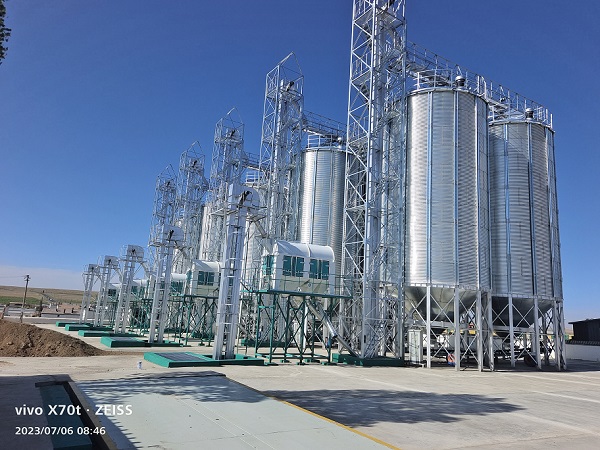
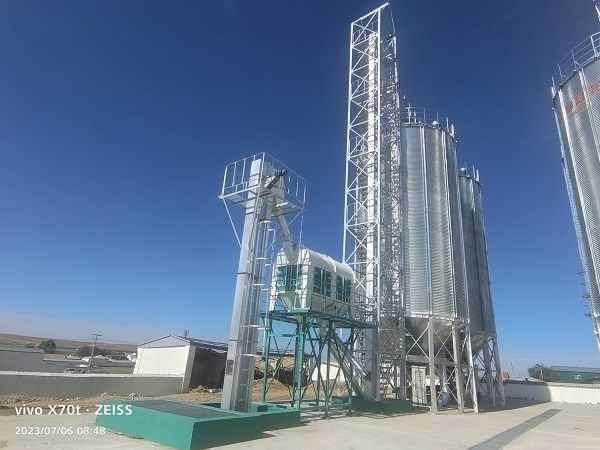
Structure of fish feed silo
Silo Body
This is the central part of the silo, designed to contain and store fish feed. It is typically made from corrosion-resistant materials such as stainless steel or hot-dip galvanized steel to protect the feed from moisture and corrosion.
Top Structure
Includes the cover or cap at the top of the silo, designed to prevent rainwater and foreign objects from entering the interior of the silo.
Discharge System
Located at the bottom of the silo, it can be automated, such as a screw conveyor, vibratory feeder, or pneumatic conveying system, to facilitate the extraction and distribution of feed.
Conical Bottom
The conical design aids in the flow of feed, reduces residue, and facilitates cleaning and maintenance.
Legs or Supports
The silo is usually supported by metal legs to ensure structural stability and allow for feed storage above the ground level.
Feed Inlet
Located at the top or side of the silo, used for adding feed into the silo.
Ventilation System
May include vents or ventilation columns to ensure air circulation within the silo, reducing humidity and the growth of mold.
Monitoring Equipment
Such as temperature sensors, humidity sensors, and level meters, used to monitor the internal environment of the silo and the feed inventory.
Safety Facilities
Like ladders, platforms, and protective railings, ensure the safety of maintenance personnel.
Corrosion Protection
The surface of the silo may undergo special treatment, such as hot-dip galvanizing, to enhance its corrosion resistance.
Seals and Edges
Seals may be installed at the joints and edges of the silo to prevent the ingress of rainwater.
Additional Accessories
Depending on specific needs, the silo may also be equipped with additional accessories such as breather valves, level indicators, and weighing systems.
Control System
May include a control panel or computer system for managing the feed intake, discharge, and monitoring of the silo.
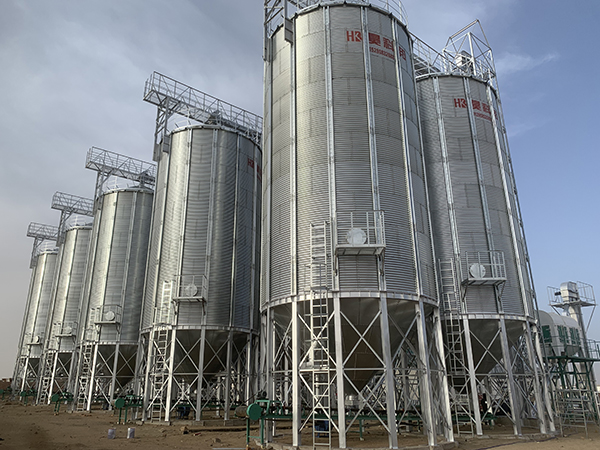
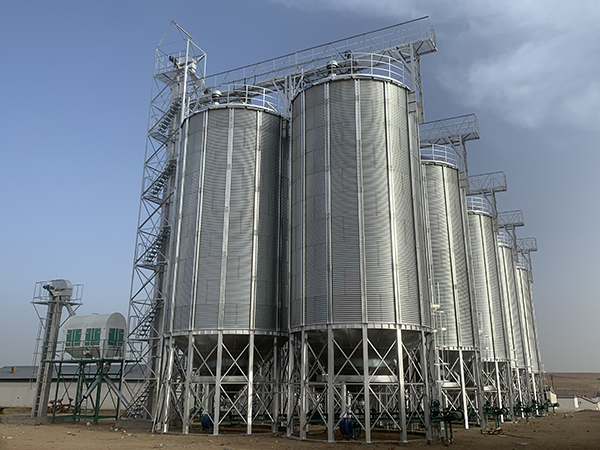
Advantages of fish feed silo
Efficient Storage
They allow for the bulk storage of fish feed, reducing the need for frequent purchases and transportation, thereby lowering costs.
Feed Quality Protection
By providing sealed storage, silos protect the feed from external environmental factors such as weather, pests, and microorganisms, keeping the feed fresh and nutritious.
Waste Reduction
The design of silos helps to minimize feed loss and waste due to improper storage conditions.
Compatibility
Modern fish feed silos are typically compatible with automated feeding systems, enhancing the efficiency of farming operations.
Easy Monitoring and Management
Silos come equipped with monitoring systems that facilitate real-time monitoring of feed inventory and quality.
Durability
Made with high-quality materials and anti-corrosion treatments, silos have a long service life, reducing the frequency of maintenance and replacement.
Flexibility
The design of silos allows for a variety of sizes and shapes, which can be customized according to the specific needs and site conditions of the farm.
Cost-Effectiveness
Although the initial investment may be higher, silos are an economical storage solution in the long run due to their durability and low operating costs.
Safety
The structural stability and safety features of silos reduce safety risks during the storage process.
Environmental Adaptability
Silo designs take into account various climatic conditions and can be stably used in multiple environments.
Ease of Cleaning and Maintenance
With their simple structure and often self-cleaning features, silos are easy to regularly clean and maintain.
Promoting Farm Modernization
The use of silos is a sign of the development of the livestock industry towards modernization and scaling, which helps to improve overall production efficiency.
Reduced Cross-Contamination
The use of silos helps to reduce cross-contamination between different feeds or raw materials, enhancing food safety.
Space Saving
The compact design of silos occupies a small amount of space, making them suitable for farms with limited land.
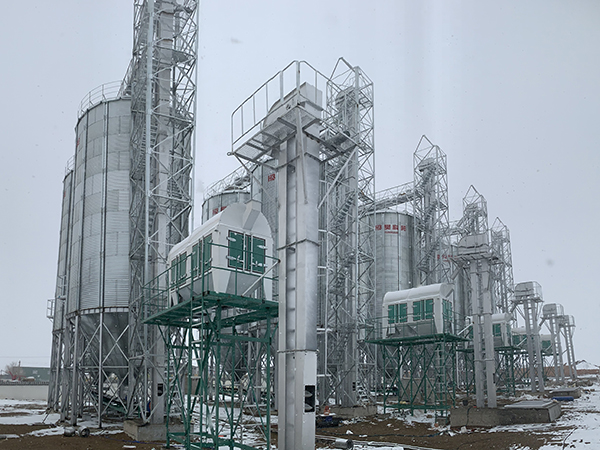
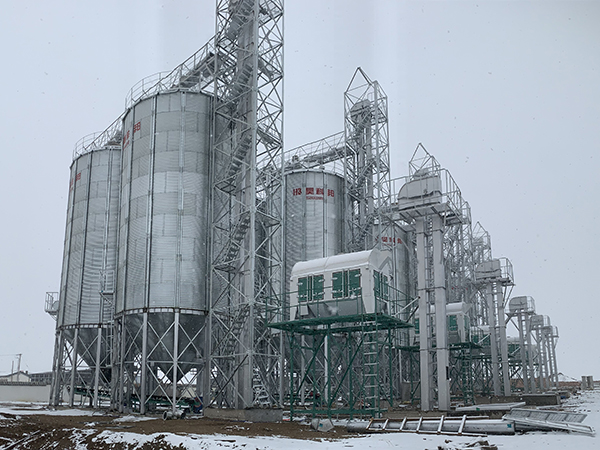
Fish feed silo applications
Fish farms and fisheries
Fish feed silo are used in fish farms and fisheries to store and manage feed to meet the needs of various cultured fish species, including freshwater fish, marine fish, and shrimp.
Aquariums
Aquariums often require large quantities of feed to feed the various fish and aquatic organisms on display. Fish feed silos can be used to store and manage this feed.
Fish fry hatcheries
In fish fry hatcheries, fish feed silos are utilized to store specific types of feed suitable for the growth of fish fry, ensuring they receive adequate nutrition for growth.
Aquaculture bases
In aquaculture bases, fish feed silos are used to supply feed for various cultured fish species, including salmon, sea bass, and bream.
Aquaculture cooperatives
Aquaculture cooperatives often have centralized feed supply needs. Fish feed silos can be used to centrally store and manage feed for distribution to the cooperative’s various aquaculture farms.
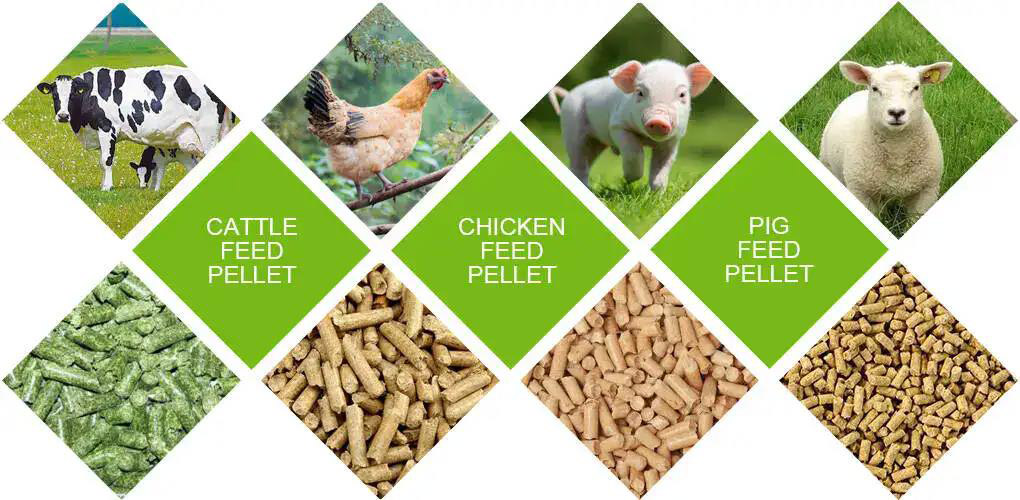
Fish feed silo technical parameters
Scientifically speaking, the Silo capacity should be measured with volume (m3). Even in the same grain Silo, the storage tons will be different for different grains with different densities. The following table is calculated based on a Silo density of 0.75kg/m3, and surely HKB customizes Silo systems unique for you.
| Most Popular Hopper Bottom Steel Silo Technical Specifications | ||||||||
| Capacity | 50Ton | 100Ton | 150Ton | 200Ton | 300Ton | 500Ton | 1000Ton | 1500Ton |
| Model | TCZK
03605 |
TCZK
04507 |
TCZK
05507 |
TCZK
06406 |
TCZK
07307 |
TCZK
07313 |
TCZK
11010 |
TCZK
12811 |
| Diameter(m) | 3.667 | 4.584 | 5.500 | 6.417 | 7.334 | 7.334 | 11.000 | 12.834 |
| Total Height(m) | 9.56 | 12.53 | 13.25 | 12.85 | 14.70 | 21.42 | 20.95 | 23.51 |
| Volume(m³)
Density:0.75ton/m³ |
69 | 150 | 222 | 273 | 415 | 699 | 1346 | 2039 |
| Most Popular Flat Bottom Steel Silo Technical Specifications | ||||||||
| Capacity | 1000Ton | 1500Ton | 2000Ton | 2500Ton | 3000Ton | 5000Ton | 8000Ton | 10000Ton |
| Model | TCK
10014 |
TCK
11915 |
TCK
13715 |
TCK
15514 |
TCK
15518 |
TCK
18321 |
TCK
24718 |
TCK
25621 |
| Diameter(m) | 10.084 | 11.918 | 13.750 | 15.584 | 15.584 | 18.334 | 24.751 | 25.668 |
| Total Height(m) | 18.69 | 20.34 | 20.87 | 20.30 | 24.78 | 28.60 | 26.99 | 30.60 |
| Volume(m³)
Density: 0.75ton/m³ |
1335 | 2009 | 2701 | 2467 | 4145 | 6693 | 10879 | 13484 |

